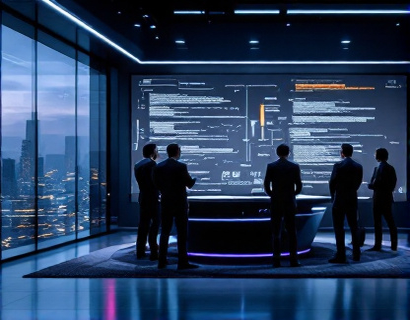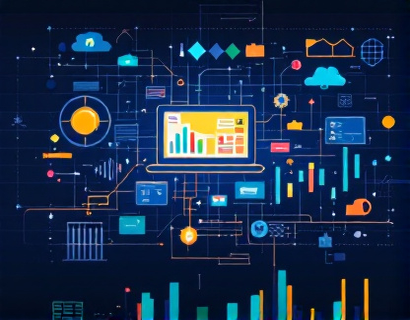Unlocking the Cosmos: Interactive Software for Astronomy Education and Exploration
The pursuit of knowledge about the universe has captivated human imagination for centuries. From ancient astronomers to modern space explorers, the allure of the cosmos remains unmatched. In recent years, the advent of interactive software has revolutionized the way we learn about and explore astronomy. This innovative technology transforms complex celestial phenomena into engaging, accessible, and immersive experiences, making it an invaluable tool for astronomy enthusiasts, educators, and students.
Interactive software for astronomy education and exploration is designed to bridge the gap between intricate scientific concepts and engaging learning. It offers a dynamic platform where users can delve into the mysteries of the universe, from the closest planets in our solar system to distant galaxies beyond our own. This software is not just a tool for passive observation; it actively encourages interaction, experimentation, and discovery, fostering a deeper understanding and appreciation of the cosmos.
Immersive Learning Experiences
One of the most significant advantages of interactive astronomy software is its ability to create immersive learning environments. Users can embark on virtual journeys through the solar system, exploring each planet in detail. They can witness the majestic rings of Saturn up close, observe the Great Red Spot on Jupiter, and even take a virtual walk on the surface of Mars. These experiences are not just visually stunning; they are scientifically accurate, providing a realistic and educational adventure.
For students, these immersive experiences can make learning astronomy more engaging and memorable. Traditional classroom methods often struggle to capture the attention of students, especially when dealing with abstract concepts. Interactive software, however, brings these concepts to life, making them easier to understand and retain. For example, a lesson on the phases of the Moon can be enhanced by a simulation that allows students to manipulate the Moon's position relative to the Earth and Sun, observing how the illuminated portion changes.
Engaging Resources
Interactive astronomy software comes equipped with a wealth of engaging resources. These include detailed 3D models of celestial bodies, interactive timelines of astronomical events, and comprehensive databases of stars, planets, and other celestial objects. Users can access these resources at their own pace, allowing for self-directed learning and exploration.
For educators, these resources are a treasure trove. They can use the software to create custom lesson plans, incorporating interactive elements that cater to different learning styles. For instance, a teacher can design an activity where students build their own models of the solar system using the software's 3D models, enhancing their understanding of scale and relative positions.
Comprehensive Tools
The software also provides a suite of comprehensive tools that cater to various levels of expertise. Beginners can start with basic tools such as star maps and planet locators, which help them identify celestial objects in the night sky. Intermediate users can explore more advanced features like spectral analysis and orbital mechanics simulations. Advanced users, including professional astronomers and space enthusiasts, can utilize sophisticated tools for research and data analysis.
One of the key features is the ability to customize simulations and models. Users can adjust parameters such as time, scale, and perspective to gain deeper insights into celestial phenomena. For example, they can simulate the alignment of planets, observe solar eclipses, or study the dynamics of galaxy collisions. These tools not only enhance understanding but also inspire curiosity and further exploration.
Accessibility and Inclusivity
Interactive astronomy software is designed to be accessible to a wide audience. It is user-friendly, with intuitive interfaces that make it easy for anyone to navigate, regardless of their technical background. This inclusivity ensures that people from diverse backgrounds can engage with astronomy, breaking down barriers and democratizing access to scientific knowledge.
For individuals with disabilities, the software can be tailored to meet specific needs. Features such as text-to-speech, adjustable text sizes, and high-contrast modes make the platform accessible to users with visual impairments. Additionally, the software can be used on various devices, including computers, tablets, and smartphones, ensuring that users can access it anytime and anywhere.
Collaborative Learning
Another significant benefit of interactive astronomy software is its support for collaborative learning. Users can work together in real-time, sharing observations, insights, and discoveries. This collaborative approach fosters a sense of community and encourages peer learning, which can be particularly beneficial in educational settings.
For example, a classroom can conduct a group project where students collaborate to create a detailed model of a planetary system. Each student can contribute their expertise, whether it's researching a specific planet, designing the model, or presenting the findings. This collaborative process not only enhances learning but also develops important skills such as teamwork, communication, and problem-solving.
Real-World Applications
The applications of interactive astronomy software extend beyond education and exploration. Professionals in fields such as astrophysics, space engineering, and planetary science can use these tools for research and development. The software's advanced simulation capabilities allow researchers to test hypotheses, model complex systems, and visualize data in ways that traditional methods cannot match.
For space agencies and private space companies, interactive software can aid in mission planning and training. Astronauts can use simulations to practice spacewalks, operate robotic arms, and navigate spacecraft. These simulations help ensure that astronauts are well-prepared for the challenges they will face in space, enhancing safety and mission success.
Future Developments
The field of interactive astronomy software is rapidly evolving, with ongoing developments promising even more advanced features and capabilities. One area of focus is the integration of artificial intelligence and machine learning. AI can enhance the software by providing personalized learning experiences, adapting to the user's progress and preferences. For instance, the software could recommend specific resources or simulations based on the user's interests and performance.
Another exciting development is the incorporation of virtual and augmented reality technologies. VR and AR can take interactive astronomy to new heights, offering users fully immersive experiences that feel almost real. Imagine putting on a VR headset and finding yourself standing on the surface of Mars, exploring its rugged terrain and observing the sky above.
Conclusion
Interactive software for astronomy education and exploration represents a significant leap forward in how we learn about and engage with the universe. By providing immersive experiences, engaging resources, and comprehensive tools, this technology makes astronomy accessible and exciting for everyone. Whether you are a student, educator, or space enthusiast, the cosmos has never been more within reach. Embrace the opportunity to unlock the mysteries of the universe and embark on a journey of discovery like never before.










































